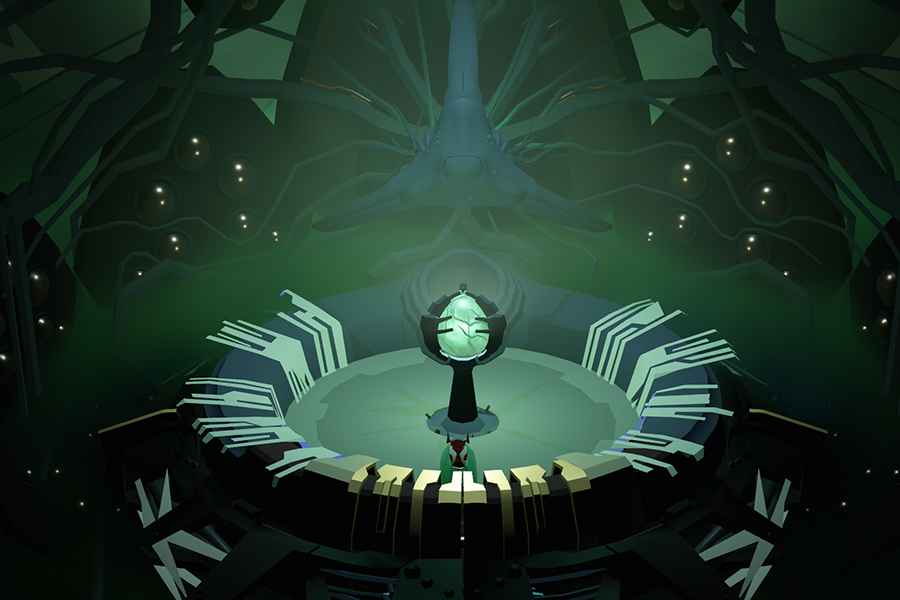Booting Cocoon feels like wrapping your hands around a jeweled puzzle box, playing around with simple elements and slowly discovering the intricate web of systems they form together. Every aesthetic and mechanical facet works in harmony to bring out this gem of a game’s true shine.
Cocoon is the brainchild of Jeppe Carlsen, a former designer for Playdead who led the creation of the acclaimed puzzle-platformers Limbo and Inside. Now, he has reunited with fellow Playdead alum and audio specialist Jakob Schmidt. Cocoon is the first game published under their new label Geometric Interactive.
Above all, Cocoon shares with its predecessors a distinct, minimalist restraint. Like the Playdead duology, the game has no HUD, no in-world text, and no non-diegetic clutter rimming the screen. The player gets a single fixed-angle view of the scenery, which itself is made of simple shapes and sparse polygons. However, the simple world is brought to life by vibrant colors and beautiful lighting effects. Each level has its own carefully curated palette, ranging from deep earth hues to soft pastels that perfectly set the tone of the world. Mysterious lost biotechnology pops visually thanks to impressively rendered iridescence. While motion in Cocoon is limited, every animation that does play is smooth and satisfying.
The game isn’t just eye candy, though. The game’s visual choices are one of the many subtle nudges that help players get their bearings and tackle emerging challenges. Cocoon is excellent at guiding the player without condescendingly dropping hints or giving away too much. Even the smallest choices are deliberate. Without button prompts, players may start the game at a loss for how to interact with their environment. However, when passing over an interactable, the insectoid protagonist raises their wings and shivers excitedly. If the player presses interact in a position where they can’t interact with anything, the creature gives them a small, confused shrug. This simple, intuitive way of pointing out game elements is aided by a pared-down control scheme: Cocoon only requires five buttons (down to two if you use a joystick instead of arrow keys!) while still giving the player a full and polished gameplay experience.
Once players are accustomed to the world, Cocoon slowly introduces the simple elements of the puzzles that will bar them from the rest of the game. One at a time, the player encounters the switches, gates, barriers, and time challenges that serve as building blocks for the rest of the game. The puzzles that form as more and more of these elements are revealed and combined do a good job of teasing the player’s brain without ever feeling frustrating or unfair.
The game’s signature gimmick is its rainbow of colored orbs, each of which can be placed on the game’s various alien structures to unlock the world inside. Each level takes place inside a new orb. Once completed, each orb gives players a new way to navigate the outside world, like revealing hidden paths or traversing geyser-like columns. The player gradually accumulates new tools like these as they build up a nesting doll of recursive worlds.
Released at an all-time high for games that range from massive and hyper-detailed (Baldur’s Gate 3, Elden Ring) to straight-up bloated (Cyberpunk 2077), Cocoon is refreshing in its simplicity. The game feels like a perfectly-chilled glass of ice water to the tequila sunset of its contemporaries. Both have their own merits, but sometimes you just need something simple and clear. Succinct and calculated, Cocoon gives players an exquisitely simple world where the spare essentials are polished till they glow.




